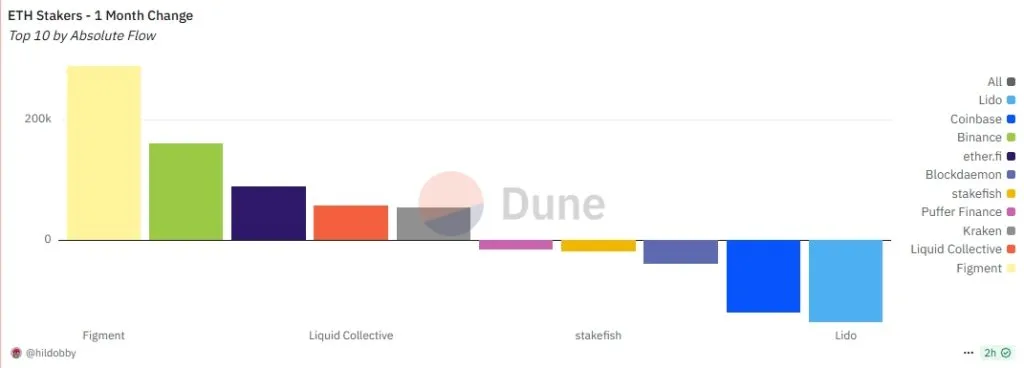Lido Finance, once the undisputed leader in Ethereum staking, has seen its market share shrink to 25%—the lowest level since March 2022, according to Tom Wan of Entropy Advisors. Back in February, Lido commanded 32% of all staked ETH; by March, its share had dropped to 29.6%. In just six months, Lido’s dominance has eroded by 5 percentage points, underscoring an accelerating shift in the staking landscape.
Lido's Market Share in ETH Staking has dropped to 25%, which is the lowest point since March 2022. pic.twitter.com/zEGPLZAQHD
— Tom Wan (@tomwanhh) July 24, 2025
The current top three staking players now include centralized exchanges Binance (8.3%) and Coinbase (6.9%). Notably, 19% of staked ETH is managed by unidentified validators—a group that likely spans both individual stakers and large, privacy-minded organizations.
Validator Exodus and Shifting DeFi Incentives
On July 16, total Ethereum staking deposits hit a record high near 36.5 million ETH, before dipping back to 36.1 million ETH. Lido led all platforms in net outflows over the past month. The validator exit queue ballooned in just one week from 1,920 to over 475,000, pushing average exit times to nine days. Galaxy Digital Research attributes part of this surge to higher technical requirements introduced by the Pectra upgrade, but the main catalyst was cascading leverage unwinds in LST assets.
 Validator exit queue surges post-upgrade
Validator exit queue surges post-upgradeGlassnode analysts noted this volatility was triggered by a sharp drop in ETH supply on Aave after a major withdrawal by a wallet linked to HTX. As a result, Aave’s WETH lending rates spiked from 2% to 18% in a week, making popular leveraged staking strategies unprofitable. Under the “looping” model, users borrow ETH against LST or LRT collateral and redeploy it for higher staking returns. As borrowing costs soared, many investors exited positions, causing Lido’s stETH to lose its peg to ETH.
Rising WETH borrow rates on Aave made the stETH leverage loop unprofitable, triggering unwinds that imbalanced the ETH/stETH pool and depegged stETH, contributing to ETH sell pressure. Additionally, a growing validator exit queue adds friction to arbitrage, slowing peg recovery. pic.twitter.com/TaZddEkBwe
— glassnode (@glassnode) July 24, 2025
Market Stabilization in Sight?
Aavechan co-founder Marc Zeller confirmed that large withdrawals drove the utilization spike on Aave, but said lending rates have since mostly normalized as the market absorbs these shifts. Despite the turbulence, Aave made headlines in July as the first DeFi lending protocol to reach $50 billion in cumulative net deposits.

